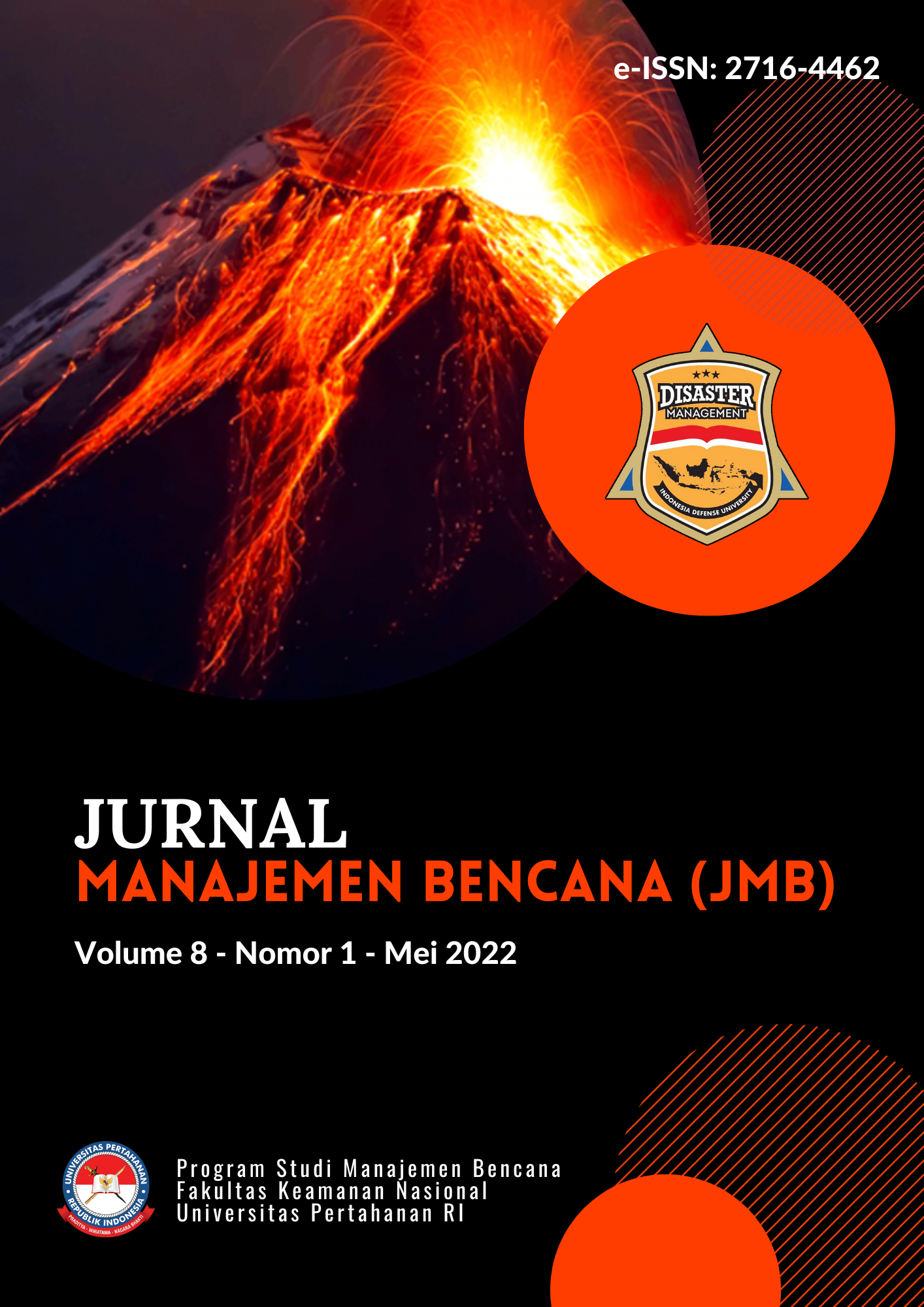A COMPARATIVE STUDY ON FOREST WILDFIRE RISK MITIGATION AND MANAGEMENT IN INDONESIA AND UNITED STATES (CASE STUDY: JAMBI AND CALIFORNIA)
DOI:
https://doi.org/10.33172/jmb.v9i1.5204Abstract
It has been known globally that Indonesia has the largest forest area in the world and is often called as World’s lungs. However, wildfire disasters in Indonesia’s forests are happening every year in various locations. This paper will study the cases by focusing on a case study in Jambi Province and compare it with similar issues that happened in California, United States. The paper shows that various human activities are the main factor in how the accident has happened over the last couple of years. Non-environmental-friendly Activities such as illegal logging and fire land clearing for palm oil plantations have been conducted by private institutions and causing long-lasting impacts on local communities. The poor knowledge of local people on how to prevent and handle wildfire forests also has become an issue that needs to be solved as soon as possible. Compared with what happened in California, the main causes are different considering the fires are caused by high temperatures and climate change’s impact. Although the local community in California barely participates in fire management, the mitigation and monitoring infrastructure is much more advanced compared to Indonesia’s.References
After the fire. US Forest Service. (n.d.). Retrieved November 16, 2021, from https://www.fs.usda.gov/science-technology/fire/after-fire.
Budiman, I., Hapsari, R. D., Wijaya, C. I., & Sari, E. N. N. (2021). The Governance of Risk Management on Peatland: A Case Study of Restoration in South Sumatra, Indonesia. World Resources Institute. https://doi.org/10.46830/WRIWP.20.00008
FAO. (2011). Community-based fire management: A review.
Goldammer, J. G., Frost, P. G. H., Jurvélius, M., Kamminga, E. M., Kruger, T., Moody, S. I., & Pogeyed, M. (2002). Community participation in integrated forest fire management: experiences from Africa, Asia, and Europe. Communities in Flames: Proceedings of an International Conference on Community Involvement in Fire Management, 33–52.
Gonzalez-Mathiesen, C., Ruane, S., & March, A. (2021). Integrating wildfire risk management and spatial planning – A historical review of two Australian planning systems. International Journal of Disaster Risk Reduction, 53, 1–11. https://doi.org/10.1016/j.ijdrr.2020.101984
I. Adhi, P. Putri. 2019. The Capacity of Jambi’s Local Government in Facing Flood, and Forest and Land Fire Haze. Jurnal Kependudukan Indonesia Vol. 14. Pusat Penelitian Kependudukan
Irawan, 2021. Pantau gambut website: https://www.pantaugambut.id/cerita/moratorium-sawit-langkah-penting-untuk-selamatkan-gambut-jambi.
Keeley, J. E., & Syphard, A. D. (2018). Historical patterns of wildfire ignition sources in California ecosystems. International Journal of Wildland Fire, 27(12), 781–799. https://doi.org/10.1071/WF18026
Li, S., & Banerjee, T. (2021). Spatial and temporal pattern of wildfires in California from 2000 to 2019. Scientific Reports, 11(1), 1–17. https://doi.org/10.1038/s41598-021-88131-9
Ministry of Environment and Forestry. 2021. Website: https://www.menlhk.go.id/site/single_post/4401/asap-digital-nasional-polri-strategis-cegah-karhutla.
Murdiyarso, D., Hairiah, K., Wasrin, U.R., Rachman, A., Tomich, T.P., van Noordwijk, M., 1998. Forest Soils under Alternatives to Slash and Burn Agriculture in Sumatra, Indonesia. in book Alternatives to Slash and Burn Agriculture
Myers, R. L. (2006). Living with Fire—Sustaining Ecosystems & Livelihoods through Integrated Fire Management. Global Fire Initiative. The Nature Conservancy. (Issue June). http://www.nature.org/initiatives/ fire/files/integrated_fire_management_myers_2006.pdf.
Nuccitelli, D. (2021, June 8). California, 'America's garden,' is drying out " Yale climate connections. Yale Climate Connections. https://yaleclimateconnections.org/2021/06/california-americas-garden-is-drying-out/.
PP No. 1/2016 on Peatland Restoration.
Rianawati, E. (2015). Review of Community Based Wildfire Management in Indonesia. https://doi.org/10.20955/r.85.67
Schilli, K. (2021, July 11). Wildfires. Western Center for Agricultural Health and Safety https://aghealth.ucdavis.edu/research/wildfires.
Simanjuntak, K. P., & Khaira, U. (2021). Pengelompokkan Titik Api di Provinsi Jambi dengan Algoritma Agglomerative Hierarchical Clustering: Hotspot Clustering in Jambi Province Using Agglomerative Hierarchical Clustering Algorithm. MALCOM: Indonesian Journal of Machine Learning and Computer Science, 1(1), 7-16.
Supriyanto, Syarifudin, Ardi. 2018. The Analysis of Forest and Land Fire Prevention and Control Policies in Jambi Province. Jurnal Pembangunan Berkelanjutan Vol. 1 no (1) 2018. Jambi University
Suyanto, S., Applegate, G., & Tacconi, L. (2002). Community-based fire management, land tenure and conflict: insights from Sumatra, Indonesia. Communities in Flames: Proceedings of an International Conference on Community Involvement in Fire Management, 27–31. https://www.fao.org/3/AC798E/ac798e08.htm
Wibowo, 2017. Conversion of Forest to Oilpalm Plantation on Peatland: Implication on Climate Change and Policy. 251 - 260. Bogor.
Downloads
Published
How to Cite
Issue
Section
License
Copyright (c) 2023 Fadiah Izzah Ajrina

This work is licensed under a Creative Commons Attribution-NoDerivatives 4.0 International License.






